| |
|
 |
|
 |
Star and Cross Tiles
Iran (probably Takht-i Sulaiman), 1270s
Fritware, overglaze painted (lajvardina)
Los Angeles County Museum of Art, Shinji Shumeikai Acquisition Fund
(AC1996.115.1–4)
cat. 83
Photo @ 2003 Museum Associates/LACMA
[click images for full object view] |
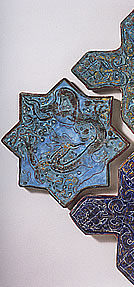 |
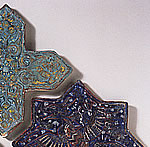 |
 |
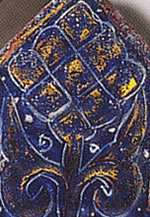 |
 |
One consequence of the Mongol invasions and subsequent
establishment of Ilkhanid rule in Iran was the introduction of Chinese-inspired
motifs, such as the dragon and the phoenix. These motifs, which
may have been brought westward via imported textiles, quickly became
part of the new vocabulary of ornament that was reflected in the
tile decoration of the royal residence at Takht-i Sulaiman [more
information on Takht-i Sulaiman].
|
|
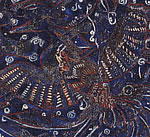 |
 |
| Star and cross tiles such as these were
produced in molds, which accounts for the repetition and duplication
of compositions. The method of manufacture also helps to identify
tiles not excavated at Takht-i Sulaiman such as this one, but which
evidently shared the same molds with tiles uncovered at the site.
|
|
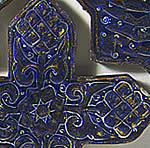 |
 |
| Star tiles bearing a dragon or a phoenix,
separated by cross tiles and arranged in alternate clusters of turquoise
or cobalt blue, were found in the so-called North Octagon, part of
a larger complex of a vaulted hall flanked by two octagonal chambers. |
|
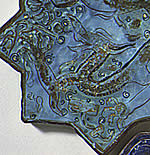 |
 |
Several techniques were used for decorating
the tiles at Takht-i Sulaiman including the overglaze lajvardina
technique seen here. In this technique a monochrome glaze of turquoise
(as seen here), cobalt blue, or white was applied and the tile fired.
The tile was then decorated with gold leaf, and finally painted
with black, white, or red enamel and fired a second time. Such brilliantly
glazed and gilt tiles must have dazzled visitors to the palace.
|
|
 |
 |
 |
 |
 |
|
|
|


